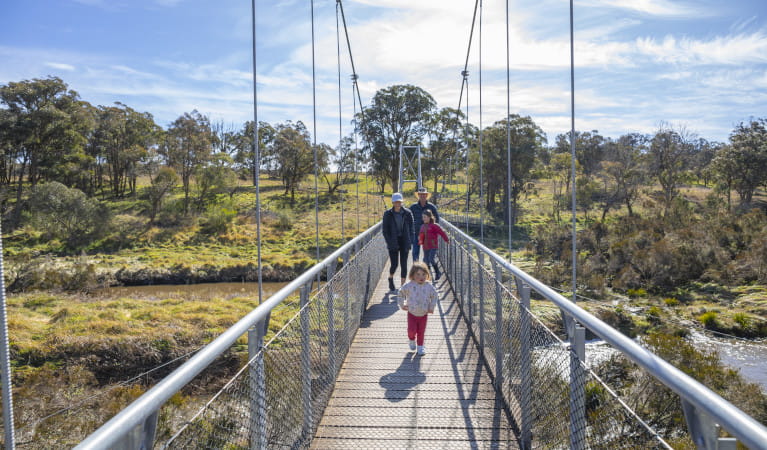Oxley Wild Rivers National Park
Overview
Oxley Wild Rivers National Park, near Armidale, spoils you with World Heritage-listed Gondwana rainforest, dramatic gorges and magnificent waterfalls. It’s perfect for walking, camping, bike or horse riding, and fishing.
Read more about Oxley Wild Rivers National Park
Oxley Wild Rivers National Park, part of the Gondwana Rainforests of Australia World Heritage Area features rare dry rainforest, dramatic gorges and waterfalls, extensive wilderness areas, wild and scenic rivers and an amazing array of wildlife. It's best explored as a scenic drive along the Waterfall Way.
Explore the Apsley Macleay Gorges, one of Australia’s largest gorge systems with incredible ridge top views and visit Wollomombi, the highest waterfall in NSW and a place sure to lift your spirit. Bushwalkers will love the multi-day Green Gully walk that takes in the park’s spectacular landscape and includes overnight accommodation in heritage-listed stockman’s huts. For those seeking heritage accommodation that is slightly more luxurious, East Kunderang Homestead is sure to impress.
Everything in the park is best seen up close – immerse your senses and yourself in this wild place while you camp, walk, paddle, picnic, cycle, horse ride, fish or swim.
Local alerts
For the latest updates on fires, closures and other alerts in this area, see https://www.nationalparks.nsw.gov.au/visit-a-park/parks/oxley-wild-rivers-national-park/local-alerts
Map
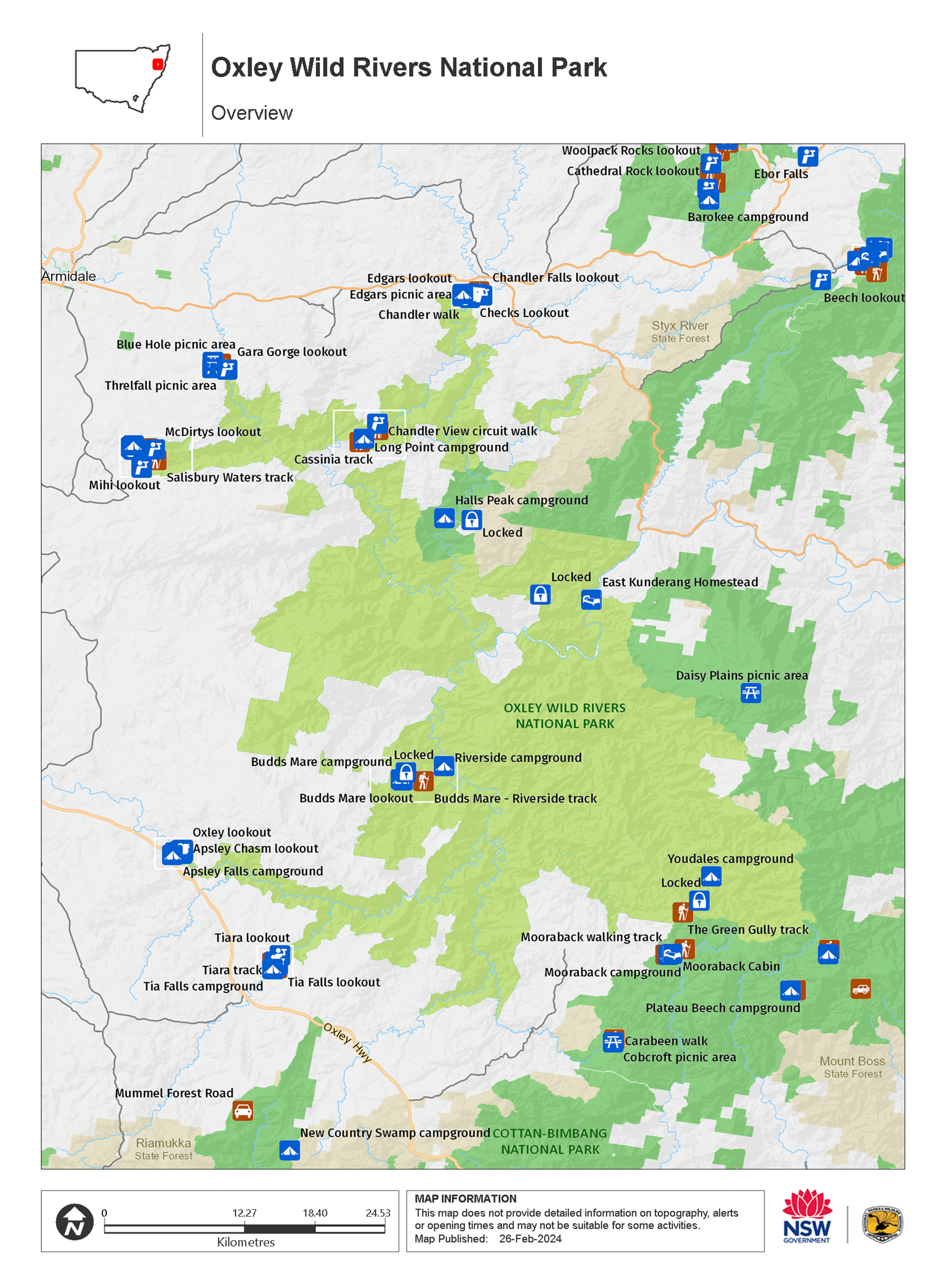
Map

Map
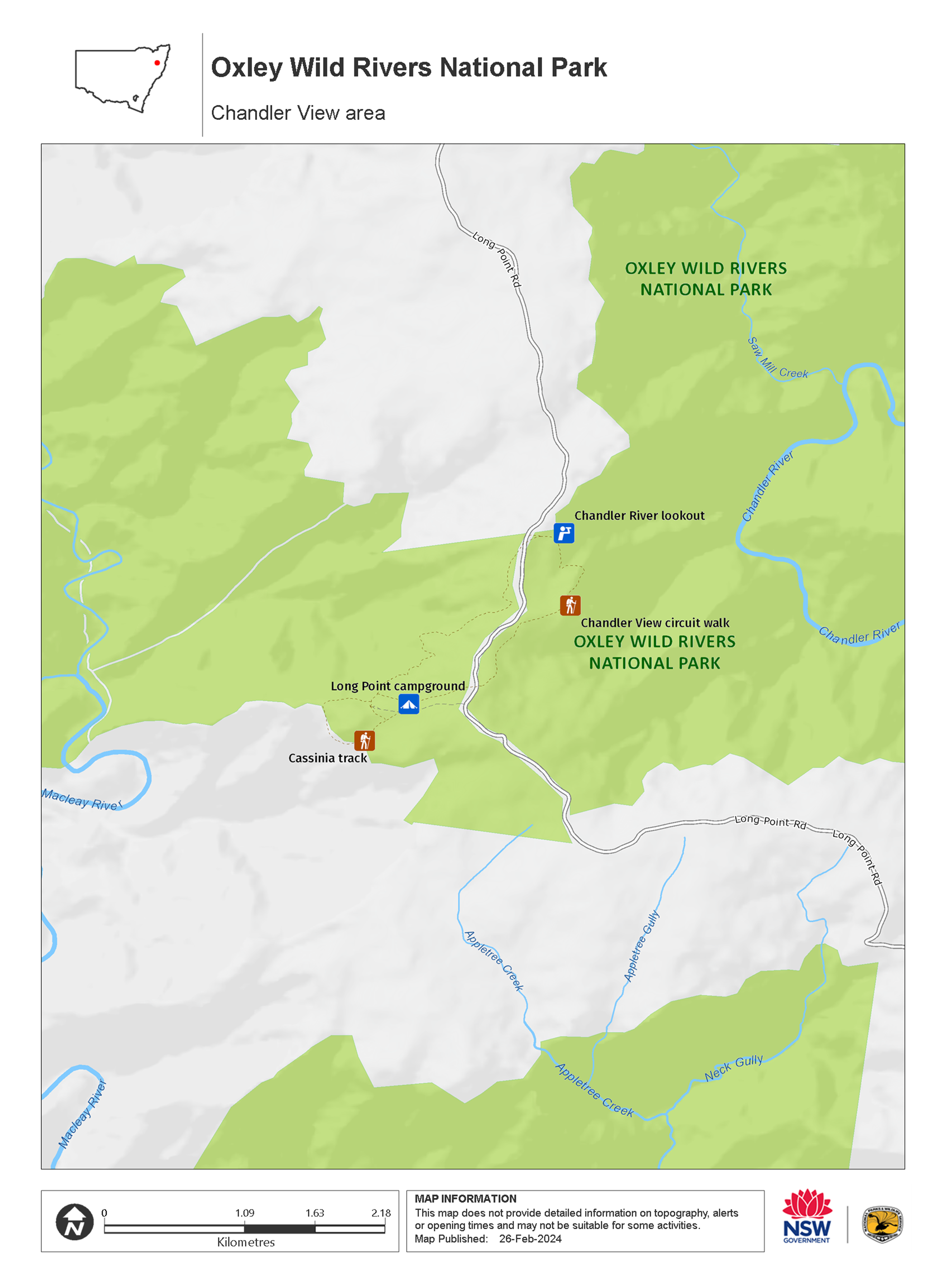
Map
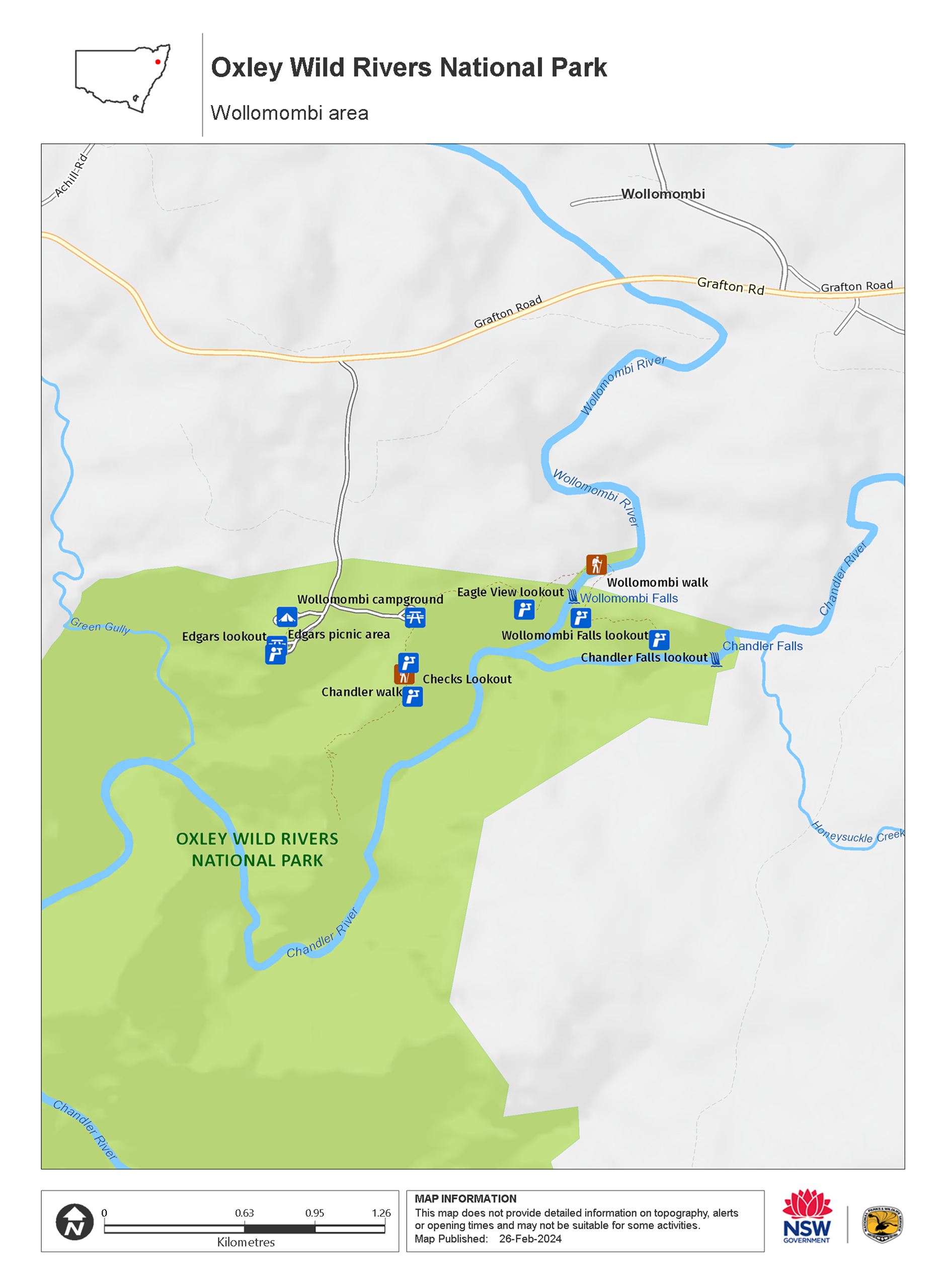
Map
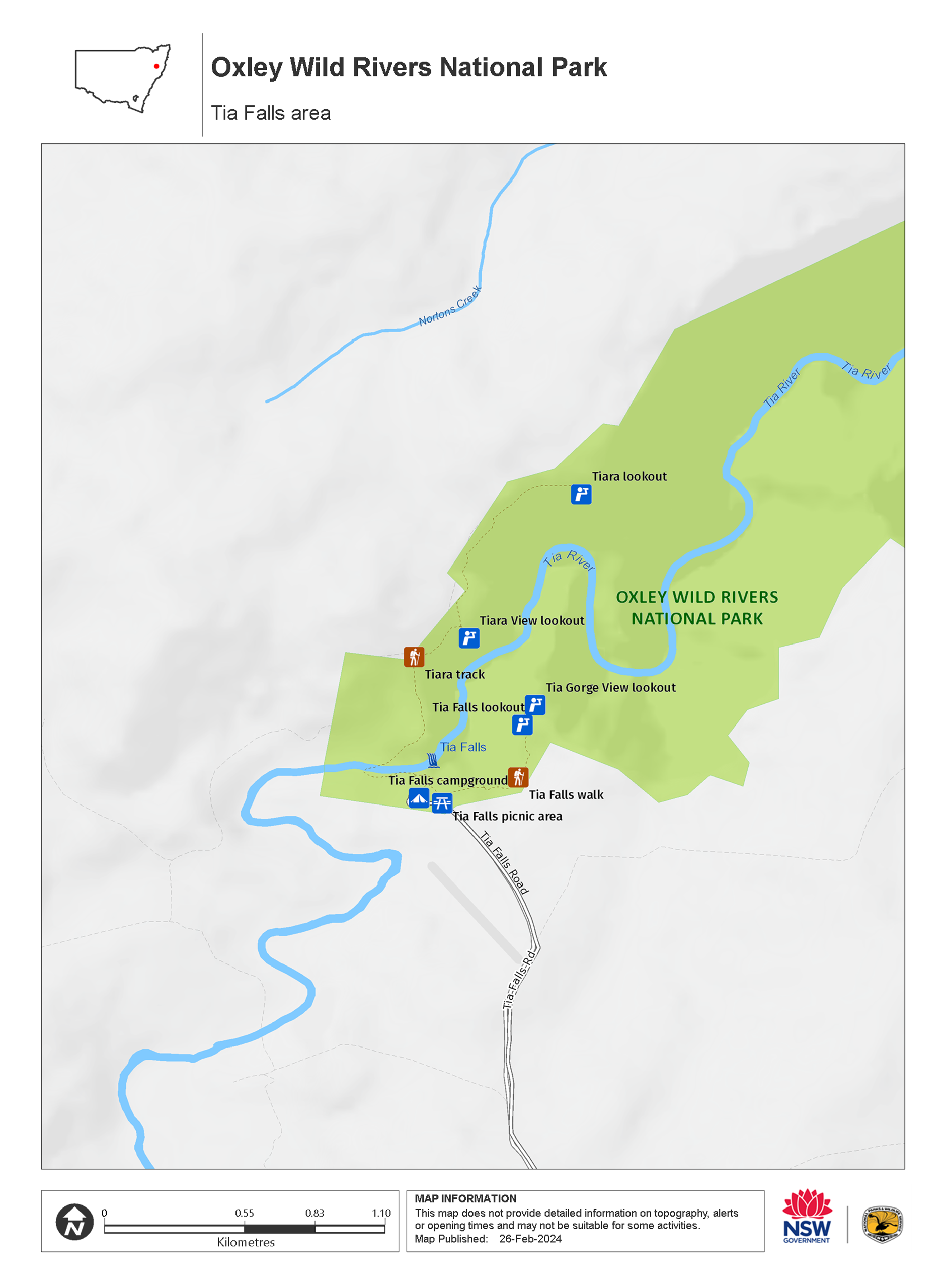
Map
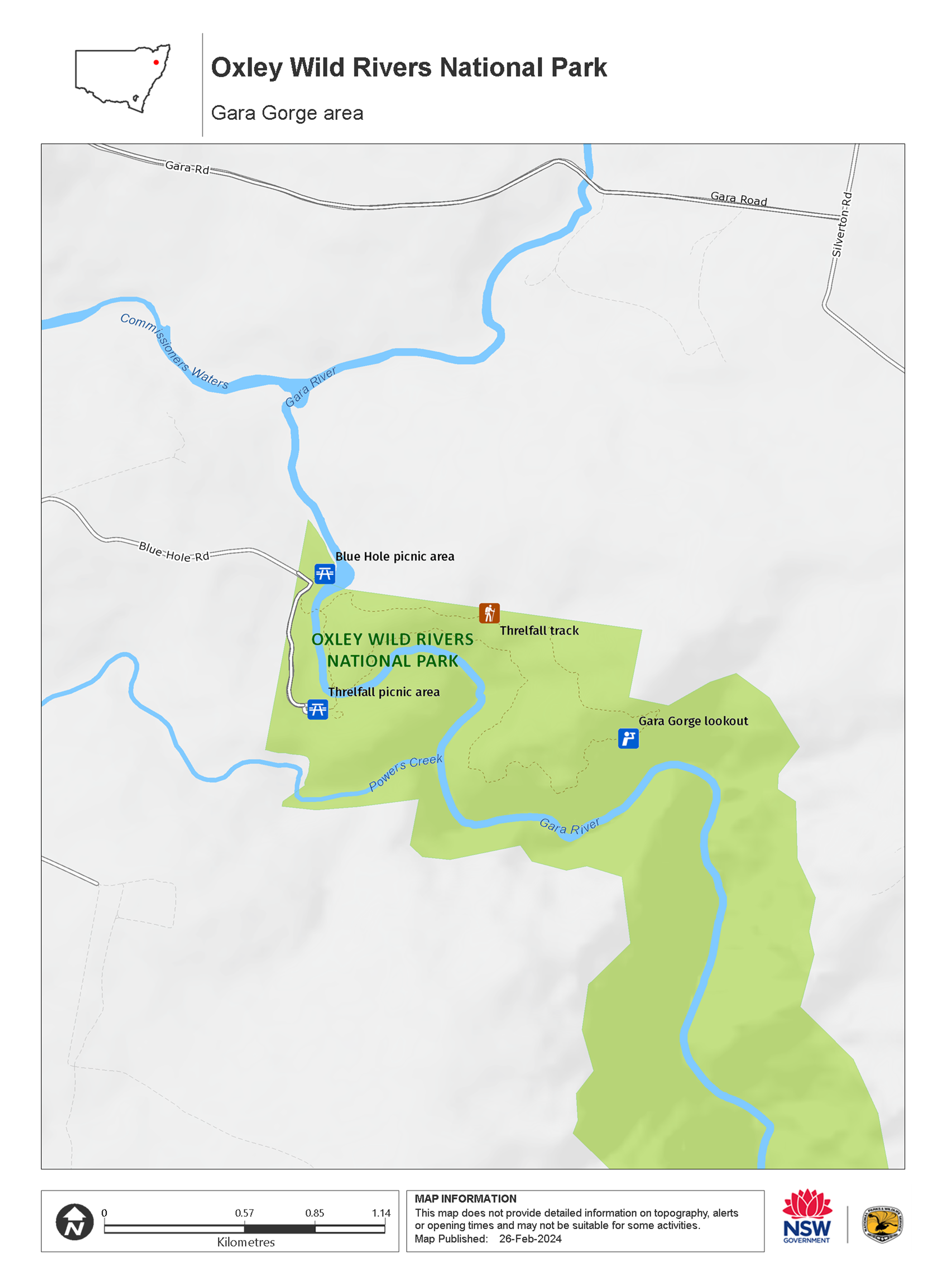
Map
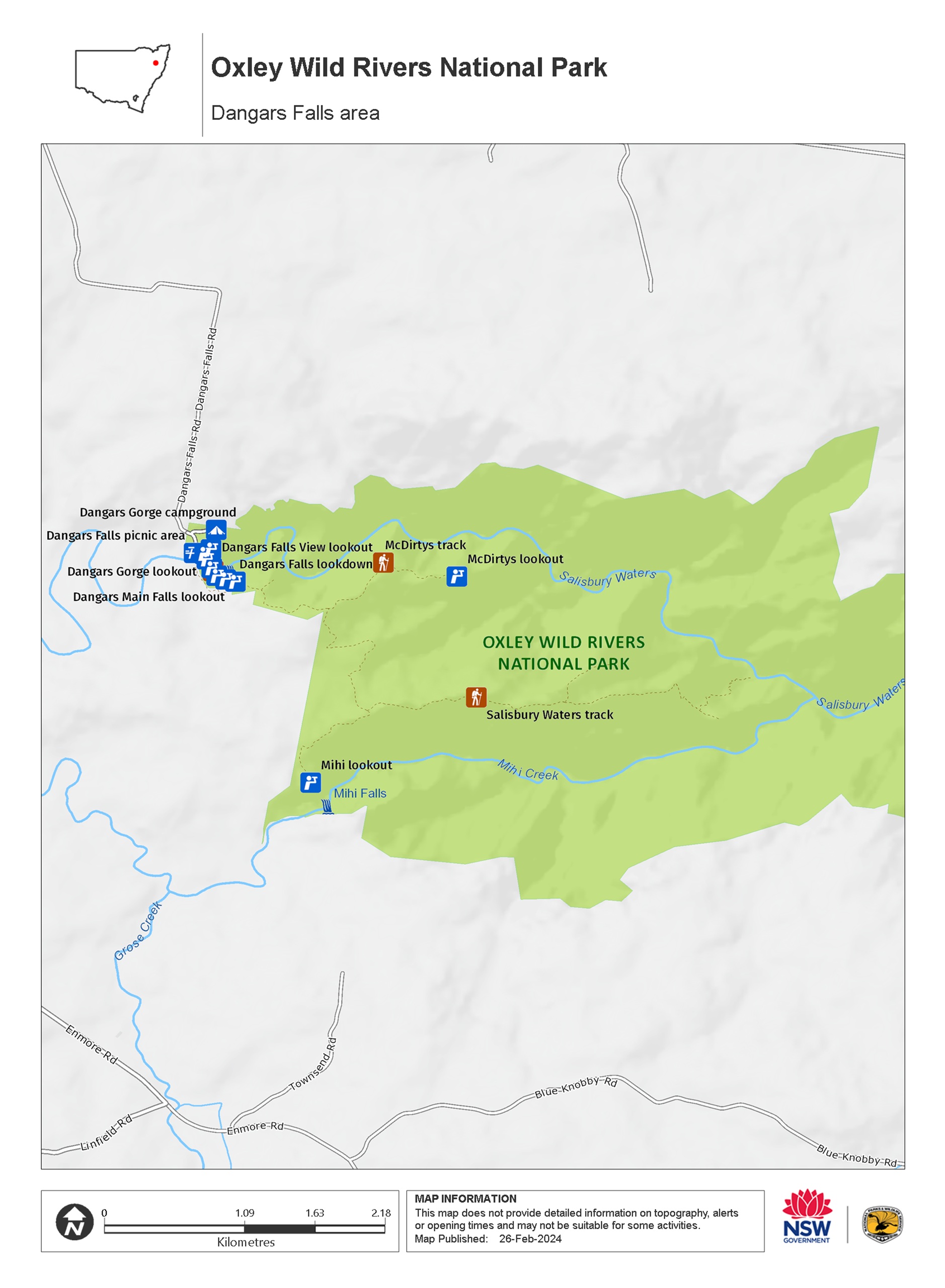
Map
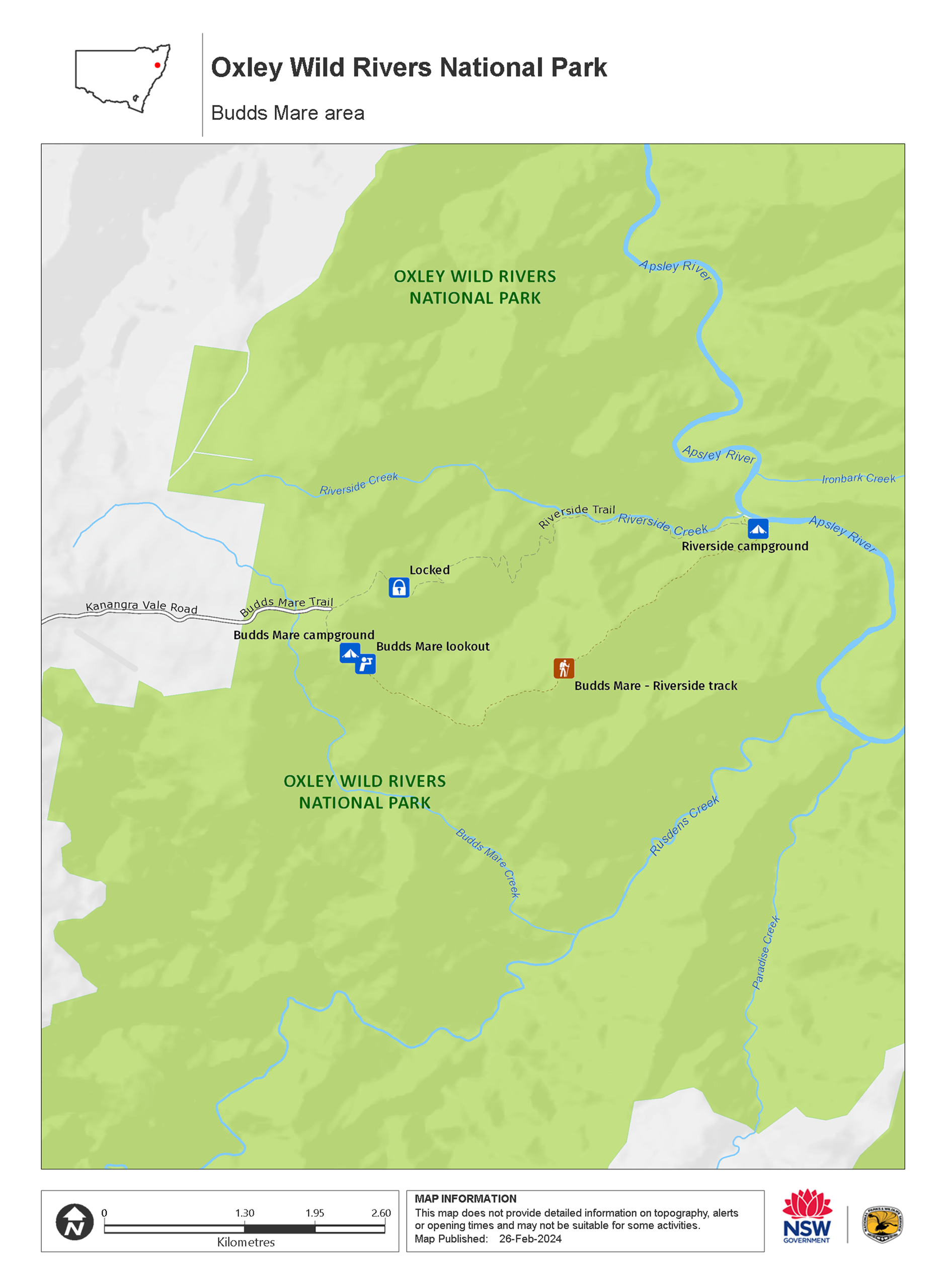
Map legend

Contact
- in the North Coast and Country NSW regions
Oxley Wild Rivers National Park is always open but may have to close at times due to poor weather or fire danger.
-
There are 3 areas in Oxley Wild Rivers National Park where you'll need day use vehicle permits: Halls Peak campground and picnic area, Riverside campground and picnic area, and Youdales Hut campground and picnic area. Day use vehicle permits can be bought online or by calling the National Parks Contact Centre on 1300 072 757. If camping, permit fees are included in the campground fee.
Contact us for permits. -
-
Armidale office
02 6738 9100
Contact hours: Monday to Friday, 8.30am to 5pm. - 145 Miller Street, Armidale NSW 2350
-
Email: npws.nea@environment.nsw.gov.au
-
Armidale office
-
-
Walcha office
02 6777 4700
Contact hours: Monday to Friday, 8.30am to 4.30pm. - 188W North Street, Walcha NSW 2354
-
Email: npws.nea@environment.nsw.gov.au
-
Walcha office
Visitor info
All the practical information you need to know about Oxley Wild Rivers National Park.
Maps and downloads
Nearby towns
Walcha (18 km)
Walcha is the gateway to some of the best adventure experiences in Australia. Expect gorges, rainforests, waterfalls and wilderness. Enjoy helicopter flights, 4WD tours and fishing, as well as guided bushwalks in some of Australia's most rugged terrain.
Armidale (39 km)
During autumn the parks and gardens around Armidale show their beautiful colours. Enjoy a drive along the Waterfall Way, stopping at waterfalls and craggy gorges in the rugged countryside.
Dorrigo (87 km)
Dorrigo is a serene country town and the gateway to Dorrigo National Park. Its close to the edge of the escarpment above the Bellingen Valley.
Learn more
Oxley Wild Rivers National Park is a special place. Here are just some of the reasons why:
Jaw-dropping scenery

With dramatic ridges and gorges, towering rock outcrops and beautiful rivers and waterfalls, there is something new around every corner and you'll be constantly amazed by the views. The sight of a majestic wedge-tailed eagle soaring high above the gorges looking for food is a truly spectacular sight to behold. Don't forget your camera, give yourself plenty of time and keep your eyes open.
- Budds Mare lookout Enjoy a picnic lunch at Budds Mare lookout surrounded by World Heritage listed rainforest and looking out to spectacular views across the Apsley River.
- Dangars Falls walking track Dangars Falls walking track is a great introduction to the waterfalls, rivers and gorges of Oxley Wild Rivers National Park, near Armidale. A short and easy stroll, it delivers you right into the heart of this vast World Heritage Area.
- The Green Gully Track Experienced bushwalkers will enjoy rising to the challenges offered by The Green Gully Track in Oxley Wild Rivers National Park, near Walcha. Bookings are necessary to secure your experience on this 65km hike over 4 days through declared wilderness areas and dramatic gorges.
- Tia Falls walk Tia Falls walk in Oxley Wild Rivers National Park is great for children. A short, easy walk, it offers spectacular views of Tia Falls and Gorge.
Ancient lands

Oxley Wild Rivers National Park is part of the Gondwana Rainforests of Australia World Heritage Area. The park contains some of the best examples of dry rainforest communities in Australia. When you are out exploring the wet and dry eucalypt forests, grassy woodlands and heathlands of the park, look for native olives, lacebarks, shiny-leaved and giant stinging trees, shatterwoods, scentless rosewoods and red kamalas.
Abundant wildlife

The varied plant communities of Oxley Wild Rivers National Park provide a home for over 350 animal species, including the largest confirmed population of brush-tailed rock wallabies. Even though there are roughly 10,000 of this endangered species in the park, you'll have to keep your eyes open to catch a glimpse of their bushy tail. The park also boasts over 173 bird species, including the majestic wedge-tailed eagle, peregrine falcon, square-tailed kite and sea eagle.
- Dangars Falls walking track Dangars Falls walking track is a great introduction to the waterfalls, rivers and gorges of Oxley Wild Rivers National Park, near Armidale. A short and easy stroll, it delivers you right into the heart of this vast World Heritage Area.
- The Green Gully Track Experienced bushwalkers will enjoy rising to the challenges offered by The Green Gully Track in Oxley Wild Rivers National Park, near Walcha. Bookings are necessary to secure your experience on this 65km hike over 4 days through declared wilderness areas and dramatic gorges.
- Threlfall walking track Threlfall walking track in Oxley Wild Rivers National Park takes in the spectacular Gara Gorge wilderness area, with scenic views and a chance to see the historic hydro-electric scheme.
A national first

John Oxley was the first European to visit the New England region, passing through the area that is now Oxley Wild Rivers National Park in September 1818. Following Oxley, cedar-getters penetrated the remote and inaccessible gorges followed by pioneer cattle grazers who braved the remote wilderness for a hundred years. Between 1893 and 1894 the first commercial hydro-electric scheme was constructed to power the town and gold mines of nearby Hillgrove. Today you can visit the remains of this historical site when you take a walk along the Threlfall Historic walk.
- Threlfall walking track Threlfall walking track in Oxley Wild Rivers National Park takes in the spectacular Gara Gorge wilderness area, with scenic views and a chance to see the historic hydro-electric scheme.
Plants and animals protected in this park
Animals
-

Swamp wallaby (Wallabia bicolor)
The swamp wallaby, also known as the black wallaby or black pademelon, lives in the dense understorey of rainforests, woodlands and dry sclerophyll forest along eastern Australia. This unique Australian macropod has a dark black-grey coat with a distinctive light-coloured cheek stripe.
-

Eastern water dragon (Intellagama lesueurii lesueurii)
The eastern water dragon is a subaquatic lizard found in healthy waterways along eastern NSW, from Nowra to halfway up the Cape York Pensinsula. It’s believed to be one of the oldest of Australian reptiles, remaining virtually unchanged for over 20 million years.
-

Southern boobook (Ninox novaeseelandiae)
The southern boobook, also known as the mopoke, is the smallest and most common native owl in Australia. With a musical 'boo-book' call that echoes through forests and woodlands, the southern boobook is a great one to look out for while bird watching.
-

Tawny frogmouth (Podargus strigoides)
Found throughout Australia, the tawny frogmouth is often mistaken for an owl due to its wide, powerful beak, large head and nocturnal hunting habits. The ‘oom oom oom’ call of this native bird can be heard echoing throughout a range of habitats including heath, woodlands and urban areas.
-

Peron's tree frog (Litoria peroni)
Peron’s tree frog is found right across NSW. These tree-climbing and ground-dwelling Australian animals can quickly change colour, ranging from pale green-grey by day, to a reddish brown with emerald green flecks at night. The male frog has a drill-like call, which has been described as a 'maniacal cackle’.
-

Spotted-tailed quoll (Dasyurus maculatus)
The spotted-tailed quoll is the largest remaining carnivorous marsupial on the Australian mainland. It’s protected as a vulnerable species in NSW.
Environments in this park
Education resources (1)
What we're doing
Oxley Wild Rivers National Park has management strategies in place to protect and conserve the values of this park. View the detailed park and fire management documents. Here is just some of the work we’re doing to conserve these values:
Understanding landscapes and geology
Oxley Wild Rivers National Park values the protection and conservation of biodiversity, land and native vegetation. World Heritage-listed areas within the park, such as Gondwana Rainforest, are highly treasured, protected and conserved.
Preserving biodiversity
Oxley Wild Rivers National Park embraces efforts to support the biodiversity of its flora and fauna. Field studies and periods of concentrated surveying are carried out in this park in order to maintain this, and to protect native animals and vegetation.
Managing weeds, pest animals and other threats
Pests and weeds have a significant impact to the ecosystems within Oxley Wild Rivers National Park. NPWS carries out risk assesments for new and emerging weeds as well as wild dog control to protect biodiversity in this park.
Historic heritage in our parks and reserves
Oxley Wild Rivers National Park’s remarkable heritage assets are preserved through a variety of ongoing programs. NPWS carefully maintains and conserves its historic heritage sites and features, while ensuring visitor safety and enjoyment are also priorities.
Exploring World Heritage
Oxley Wild Rivers National Park is part of the Gondwana Rainforests of Australia World Heritage Area. Its dry rainforests are rare and extremely important, and NPWS works to protect and preserve this park as a priority. Research and monitoring is conducted regularly to evaluate the status and distribution of rare and threatened species and to identify threats to World Heritage values.
Developing visitor facilities and experiences
NPWS recognises that visitor facilities and experiences in NSW national parks must be both enjoyable and easily accessed. Oxley Wild Rivers National Park regularly reviews its processes and systems, incorporating visitor feedback and implementing new ideas and technologies as appropriate. To ensure optimal comfort and enjoyment, tourist accommodation and other park facilities are serviced and maintained to a high standard.
Managing fire
NSW is one of the most bushfire prone areas in the world as a result of our climate, weather systems, vegetation and the rugged terrain. NPWS is committed to maintaining natural and cultural heritage values and minimising the likelihood and impact of bushfires via a strategic program of fire research, fire planning, hazard reduction, highly trained rapid response firefighting crews and community alerts.

